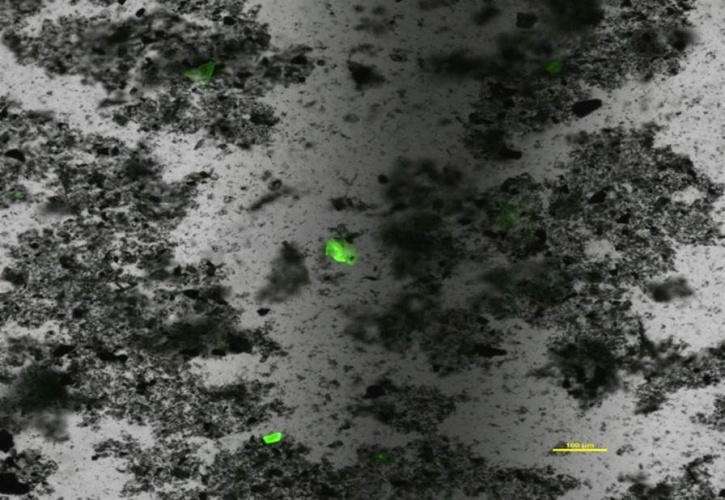
Microplastics – classed as plastic debris smaller than 5mm – are a growing threat to the oceans and the marine life that inhabits them. As some eight million tons of plastic enters the oceans each year, it breaks down over time into tiny fragments that can be ingested by fish and other sea creatures. According to Warwick, identifying the levels of plastic pollution can be difficult, with the particles becoming invisible to the human eye as they get smaller.
To help address this issue, the team used a fluorescent dye known as Nile red which attaches itself to plastic particles. It then employed a combination of fluorescence microscopy and image analysis software in a semi-automated process that calculates the concentration of microplastics in a given sample. Examining seawater and beach sand from the English coast around Plymouth, the researchers detected a much larger amount of small microplastics (smaller than 1mm) than was previously estimated, or which could have been found using traditional methods. The work is published in the journal Environmental Science & Technology.
“Using this method, a huge series of samples can be viewed and analysed very quickly, to obtain large amounts of data on the quantities of small microplastics in seawater or, effectively, in any environmental sample,” said lead author Gabriel Erni-Cassola, a PhD candidate at Warwick specialising in ocean plastics.
“Current methods used to assess the amount of microplastics mostly consist in manually picking the microplastics out of samples one by one – demonstrating the great improvement of our method.”
According to the study, the method has proven to be highly effective in the quantification of small polyethylene, polypropylene, polystyrene, and nylon-6 particles. Polypropylene - used in packaging and food containers – was found to be the most abundant polymer at microplastic level. Overall, it’s believed that just one per cent of ocean plastic is accounted for, with the remainder essentially ‘lost’ at sea. It’s hoped the new technique could be a first step towards identifying the missing 99 per cent.
“Obviously this method needs to be implemented in future scientific surveys to confirm our preliminary findings,” said study co-author Dr Joseph A Christie-Oleza, Natural Environment Research Council (NERC) Fellow at Warwick. “It is important to understand how plastic waste behaves in the environment to correctly assess future policies”.




Swiss geoengineering start-up targets methane removal
No mention whatsoever about the effect of increased methane levels/iron chloride in the ocean on the pH and chemical properties of the ocean - are we...